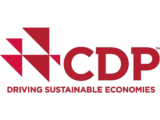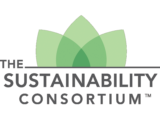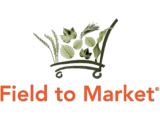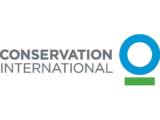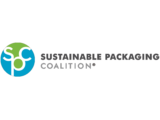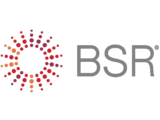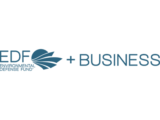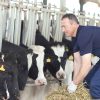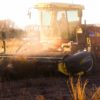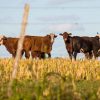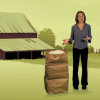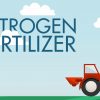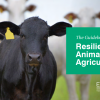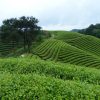Sustainable Agriculture
A growing population = more food, more water and more strain on the environment
The modern supply chain is responsible for 60 percent of all greenhouse gas emissions, 80 percent of all water use and 66 percent of all tropical deforestation. Take a closer look and you’ll find that agriculture contributes to all of these impacts. A growing population demands more food and water, leading to a strain on the environment. Agricultural production — when in concert with the environment — can benefit the environment by providing habitat, filtering water and mitigating emissions.
This also means that there are massive financial opportunities for companies serving these growing demands. However, in order to have a thriving company, you must also have a thriving environment. Companies are facing risks in their agricultural supply chains like never before, as climate change affects weather patterns, which affects crop production. Not to mention, numerous studies prove that your customers, investors and employees care about how you act on environmental sustainability. Therefore, addressing climate change is necessary for your company’s longevity and reputation.
In working with companies along the consumer product supply chain, EDF and other NGO experts have discovered several solutions to help agricultural supply chains become more sustainable. In order to implement these strategies, companies must find opportunities for improvement both internally and externally. Many sustainable agriculture solutions require engaging along the supply chain. Look through the categories below to find the solutions for your biggest agriculture challenges.
Continue Reading

Featured Content
Explore Sustainable Agriculture
Crop Production
Producing crops is critical to sustaining a society. Row crops, like corn, wheat and soy, feed humans and animals, and can be turned into a variety of inputs to many of the foods we find on the shelves at our grocery stores. Specialty crops, like vegetables, fruits and tree nuts also find their way to our markets. Regardless of the food you are selling or your place in the supply chain, it is likely that it started with initial crop ingredients.
View All Crop Production ResourcesAnimal Agriculture
Raising animals for food has both positive and negative impacts on the environment. We want supply chains to minimize the negative impacts and reinforce the positive role of animal agriculture.
View All Animal Agriculture ResourcesProduct Design
Look back here in the future as we explore how food products are being produced or created in a way that requires fewer inputs. This section will include work with food scientists and with the teams that source agricultural raw materials.
View All Product Design ResourcesPackaging
Look back here in the future as we explore plant-based packaging materials.
View All Packaging ResourcesMeasuring & Reporting
New technologies and methodologies are making data collection, analysis and sharing simpler, faster and more effective. This provides key information back to farmers and to stakeholders throughout the supply chain. Measuring and reporting should help your supply chain partners, like farmers, tell their story better to consumers, who are asking for more information about how their food is produced.
View All Measuring & Reporting ResourcesStakeholder Engagement
Understanding the motivations of different groups involved in your supply chain is a challenge, but can go a long way when showing how your sustainable agriculture goals are relevant and beneficial to them!
View All Stakeholder Engagement ResourcesPolicy
In the absence of strong federal action, there’s an opportunity for states and municipalities to lead by incentivizing conservation agriculture. Many farm and industry groups are speaking publicly on ways policy can improve farm profitability and resilience.
View All Policy ResourcesBusiness Case
The business case for your sustainability plan is a crucial step for creating internal buy-in and unlocking the necessary resources to implement your sustainable agriculture supply chain plan.
View All Business Case ResourcesSourcing
The Sustainable Agriculture section currently focuses on solutions within the U.S. that may be adapted to crop production internationally. If you are sourcing beef, palm or soy from outside the U.S., please see our Thriving Forests section.
View All Sourcing ResourcesWhere are you on the sustainability journey?
When it comes to corporate sustainability, companies usually fall into three categories — beginner, “middle-miler” and leader. Our “Engage” section will help companies get informed on the issues, understand the landscape (both internally and externally) and start assessing areas of opportunity. Those who are in the “middle miles” of implementation — that nitty gritty period between setting a sustainability goal and achieving it — will find resources in our “Execute” section helpful. For the companies that are well on their way to meeting sustainability goals, our "Lead" section offers ways for companies to use their influence to engage proactively on policy and to encourage others to step up.
Access our Journey guidesSustainable Agriculture Resources
Looking for solutions that are uniquely relevant to you and your company? Here you can filter by resource title, date, type. Below (left) you can filter by narrowing categories and sub-categories, as well as where each resource sits within different levels of the sustainability journey.
Title
Date
Type
EDF’s “How To” Guide for Resilient Dairy Supply Chains provides a roadmap for how any dairy company can set and meet a supply chain sustainability goal. This resource will provide guidance on how a company can identify the environmental footprint of their supply chain, take steps to make their supply chain more resilient and publicly report their progress toward meeting climate goals.
01/06/2022
Report
“Success first.” How one ag retailer is helping farmers adopt conservation practices, profitably.
02/01/2021
Report
A new report from EDF+Business, with analytical and research support from Deloitte Consulting, LLP, provides specific recommendations for the transportation and agriculture sectors, and for the retail and technology industries. It also includes a roadmap with detailed action items that companies, industries and sub-sectors can take today relative to their own operations, investments, coordination and advocacy to drive meaningful change, fast.
01/25/2021
Report
A guide is designed to support other researchers, academics, conservation nonprofits and any organizations interested in measuring the farm financial outcomes of agricultural conservation practices.
01/25/2021
Report
A guide to provide resources and information specific to feed sustainability to help our members and community create, meet, and exceed their own feed sustainability goals. This resource guide is intended to support TSC members, sustainability professionals, processors, brands, and retailers interested in learning more about sustainable animal feed or seeking to improve their operations.
01/25/2021
Report
How people shop is changing. Creating a transparent online marketplace that offers safe and sustainable products is critical.
08/19/2020
Guide
Farm policy expert Suzy Friedman partners with farmers to solve an age-old dilemma and protect water quality.
08/16/2020
Video
Learn how optimizing the use of nitrogen fertilizer can cut greenhouse gas emissions and water pollution while promoting sustainable agriculture.
08/16/2020
Video
A roadmap for protein companies to invest in and build a better, more sustainable and more profitable future.
08/06/2020
Handbook
Hear about Walmart's two-pronged strategy of incentivization and empowerment in engaging suppliers.
07/19/2020
Webinar
Learn about the six quality objectives that buyers can use to ensure they are purchasing high quality carbon credits.
07/15/2020
Report
A conversation between Danone North America and EDF about why sustainability has been a key component of Danone's growth, and how it led them to advocate for policy change on Capitol Hill.
06/18/2020
Webinar
Load More
